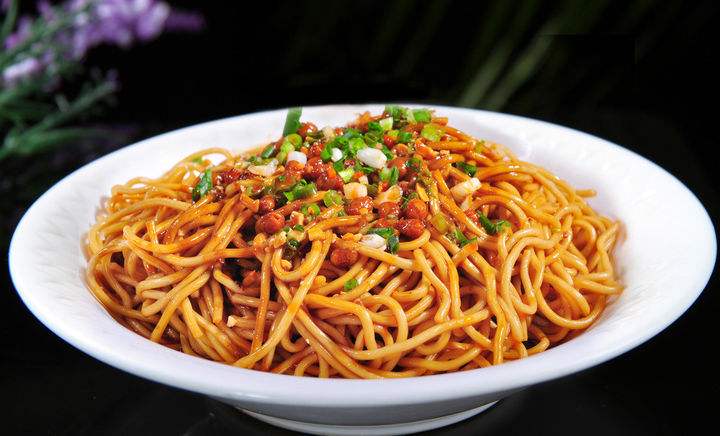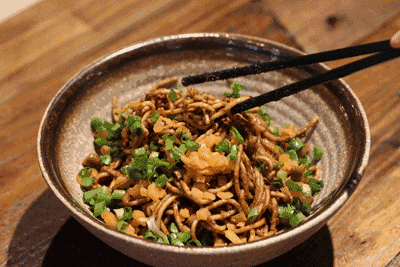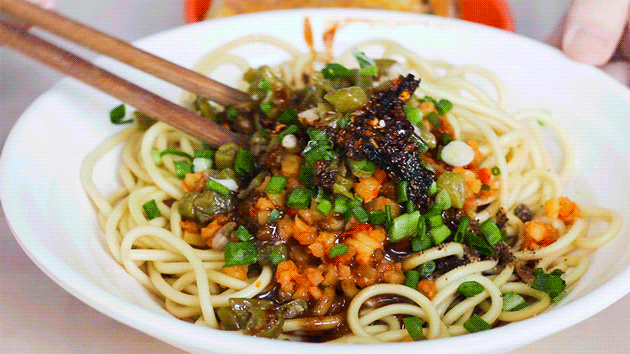When it comes to Chinese cuisine, the city of Wuhan is often overlooked in favor of more famous culinary destinations like Sichuan and Guangdong. However, Wuhan has a rich and diverse food culture that offers a unique culinary experience. One of the most famous dishes to come out of Wuhan is ReGan noodles, a savory and hearty meal that is beloved by locals and visitors alike.
History of ReGan Noodles
ReGan noodles have a long and storied history that dates back to the Han dynasty (206 BCE-220 CE). According to legend, the dish was created by a scholar named Fan Zhiyuan, who was exiled to ReGan, a small town in Hubei province. With limited ingredients available, Fan combined flour, eggs, and meat to create a simple yet delicious noodle dish. The dish became popular among the locals, and over time it spread throughout the region.
ReGan noodles became more widely known in the 1920s and 1930s, when Wuhan was a center of commerce and trade. Vendors sold the noodles from street carts, and they quickly became a favorite of workers and students who needed a quick and filling meal. Today, ReGan noodles can be found in restaurants throughout Wuhan and the surrounding area, and they are enjoyed by people of all ages.
Ingredients and Preparation
ReGan noodles are made from wheat flour, eggs, and meat. The meat can be pork, beef, or chicken, and it is usually braised with soy sauce and other seasonings to create a rich and flavorful broth. The noodles are then cooked in the broth until they are soft and tender.
One of the unique features of ReGan noodles is the addition of a special type of sesame paste called zhi ma jiang. The paste is made from ground sesame seeds and has a rich, nutty flavor that adds depth to the dish. Other common ingredients include chopped scallions, cilantro, and pickled vegetables.
Cultural Impression
ReGan noodles are more than just a delicious meal; they are also an important part of Wuhan’s cultural heritage. The dish is a symbol of the city’s resilience and resourcefulness, as it was created during a time of hardship and limited resources. Today, ReGan noodles are a source of pride for the people of Wuhan, who consider them to be one of the city’s signature dishes.
In recent years, ReGan noodles have gained popularity outside of Wuhan and are now enjoyed by people throughout China and around the world. The dish has been featured in food magazines and travel guides, and it has even inspired variations and adaptations in other cuisines.
Tips for Enjoying ReGan Noodles
If you’re planning to try ReGan noodles for the first time, there are a few things to keep in mind.
- First, be prepared for a hearty and filling meal. The noodles are served in a rich broth that is packed with flavor, so you won’t need to order a lot of other dishes to feel satisfied.
- Second, don’t be afraid to experiment with different toppings and condiments. ReGan noodles are traditionally served with chopped scallions, cilantro, and pickled vegetables, but you can also add chili oil, vinegar, or other seasonings to suit your taste.
- Finally, be sure to enjoy ReGan noodles in a traditional Wuhan-style restaurant. These restaurants are typically small and crowded, with a lively and bustling atmosphere. Sitting elbow-to-elbow with other diners and slurping up noodles from a steaming bowl is all part of the experience.
ReGan Mian is more than just a bowl of noodles – it is a cultural icon that embodies the history and traditions of Wuhan. From its humble beginnings in the 1930s to its global popularity today, ReGan Mian has withstood the test of time and adapted to changing tastes and market conditions.
As more people discover the unique texture and flavor of ReGan Mian, it is likely that the dish will continue to gain popularity and influence. Whether enjoyed as a simple street food or as part of a larger cultural experience, ReGan Mian will always be a beloved and iconic dish of Wuhan.


